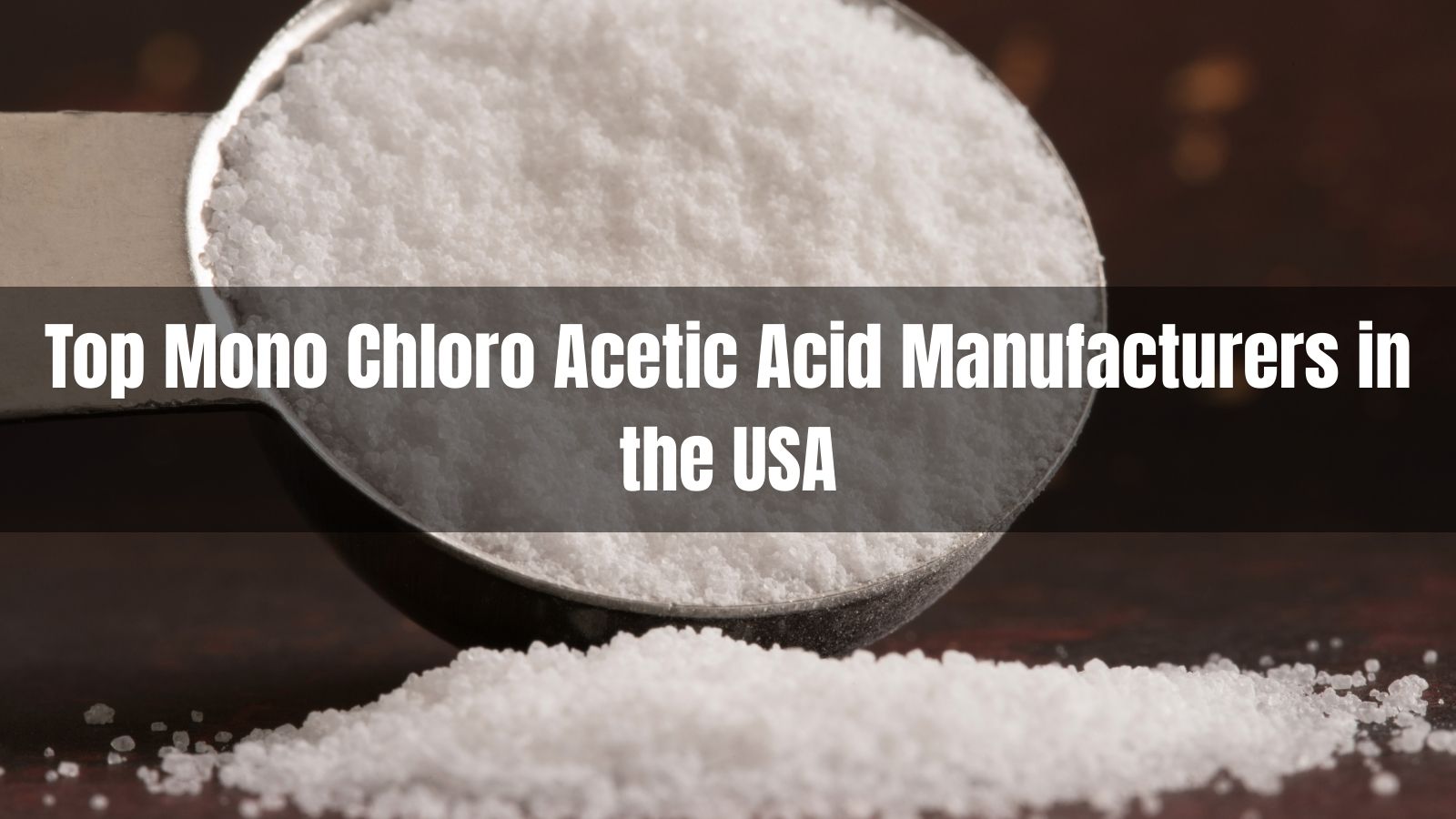
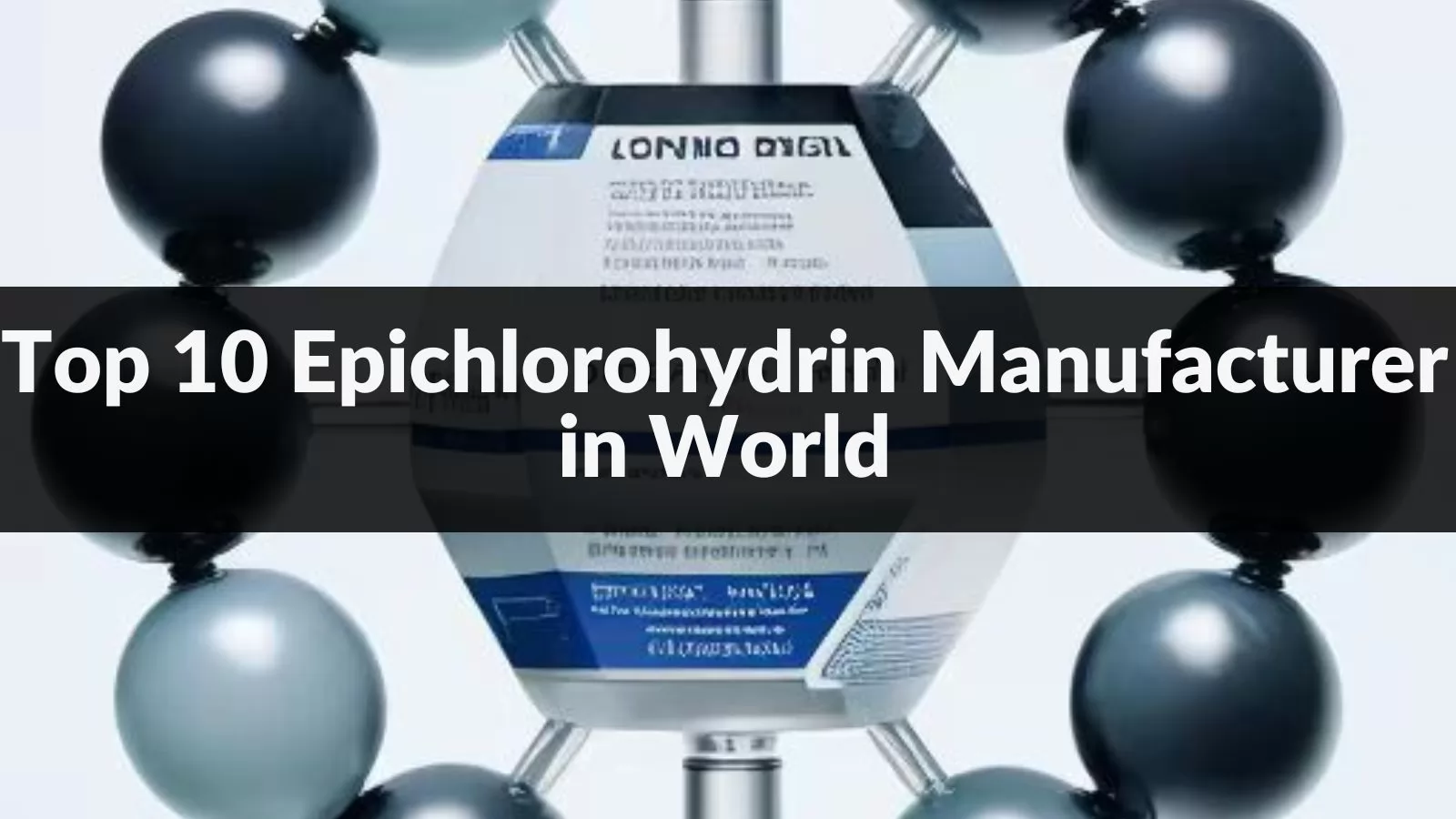
Epichlorohydrin (ECH) is a versatile chemical compound with a wide range of applications in industries such as epoxy resins, synthetic rubbers, and pharmaceuticals. As a key raw material, ECH's global market size is estimated to be around $3 billion and is expected to grow steadily in the coming years.
For buyers seeking a reliable and professional ECH manufacturer, here are the top 10 companies to consider:
Epichlorohydrin is a colorless liquid used primarily as a raw material for epoxy resins, which are essential in coatings, adhesives, and composites. Its versatility extends to:
With growing demand for sustainable materials, bio-based epichlorohydrin is gaining traction, driven by stricter environmental regulations like the EU’s REACH framework.
Table of Content
Epichlorohydrin (ECH) is a colorless, volatile liquid chemical with a slightly sweet odor, widely used as a building block in industrial chemistry. Its primary applications include:
Epoxy Resins: ECH is a key raw material for producing epoxy resins, which are used in coatings, adhesives, and composites for industries like automotive (e.g., car body coatings), construction (e.g., flooring), and aerospace (e.g., lightweight panels). Approximately 75% of global ECH production goes to epoxy resins (source: Mordor Intelligence).
Synthetic Glycerol: ECH is used to manufacture glycerol for pharmaceuticals, cosmetics (e.g., moisturizers), and food additives.
Water Treatment Chemicals: ECH produces polyamine-based coagulants for treating wastewater, critical for municipal and industrial water purification.
Paper and Textiles: It enhances the wet strength of paper products (e.g., tissue paper) and improves textile durability.
With its versatility, ECH is indispensable in modern manufacturing, but its production requires careful handling due to its reactive nature.
Selecting the right epichlorohydrin supplier is critical for ensuring product quality, timely delivery, and cost efficiency. Consider these factors:
Production Capacity: Verify the supplier’s ability to meet your volume needs. For example, Solvay S.A. produces 200,000 tons annually, ideal for large-scale buyers, while smaller players like Grasim Industries (50,000 tons) suit niche markets.
Sustainability Practices: Opt for manufacturers using eco-friendly methods, such as glycerol-based production, which reduces CO2 emissions by up to 20% compared to propylene-based methods (e.g., Solvay’s Epicerol® technology).
Quality Certifications: Look for ISO 9001, ISO 14001, or REACH compliance to ensure product purity and regulatory adherence.
Regional Availability: Choose suppliers with local offices or distributors to minimize shipping costs and delays. For instance, Aditya Birla Chemicals excels in India, while LOTTE Fine Chemical dominates Asia-Pacific.
Technical Support: Evaluate after-sales services, such as product testing or supply chain consultation. Companies like Dow Chemical offer dedicated support for custom formulations.
Pricing Transparency: Request detailed quotes and compare them against market rates, which range from $1,500–$2,500 per ton depending on purity and region.
Pro Tip: Always request a sample batch to test purity (typically 99.5% or higher for industrial-grade ECH) and compatibility with your processes.
Bio-based and traditional epichlorohydrin differ in their raw materials, environmental impact, and production costs:
Bio-Based Epichlorohydrin:
Raw Material: Derived from glycerol, a byproduct of biodiesel production.
Environmental Impact: Reduces carbon emissions significantly. For example, Solvay’s glycerol-based process cuts CO2 output by 1.3 tons per ton of ECH compared to traditional methods.
Advantages: Aligns with sustainability goals and complies with regulations like the EU’s Green Deal. It’s increasingly demanded by industries like electronics for eco-friendly supply chains.
Challenges: Glycerol price volatility (tied to biodiesel markets) can raise costs, and production scales are smaller than traditional methods.
Example: Hexion Inc. expanded its bio-based ECH capacity in the Netherlands by 25,000 tons in 2024.
Traditional Epichlorohydrin:
Raw Material: Produced from propylene, a petrochemical feedstock.
Environmental Impact: Higher carbon footprint due to fossil fuel reliance, contributing to 2–3 tons of CO2 per ton of ECH.
Advantages: Lower production costs and well-established infrastructure, making it dominant in markets like China (e.g., Shandong Haili Chemical).
Challenges: Faces regulatory pressure in regions like Europe, where carbon taxes are increasing operational costs.
Example: Olin Corporation uses propylene-based ECH for cost-sensitive applications in the Americas.
Market Insight: Bio-based ECH is projected to grow at 8% annually through 2030, driven by demand for green chemicals, but traditional ECH still holds 60% of the global market share due to cost advantages.
Global epichlorohydrin production is concentrated in a few key regions:
China: The largest producer, accounting for 35% of global output. Companies like Shandong Haili Chemical and Jiangsu Yangnong leverage low-cost propylene and strong domestic demand from construction and electronics.
United States: Contributes 20% of global supply, led by Olin Corporation and Dow Chemical. The US focuses on high-purity ECH for aerospace and automotive sectors.
South Korea: A hub for innovation, with LOTTE Fine Chemical producing 150,000 tons annually, serving Asia-Pacific’s electronics market.
India: Rapidly growing, with Aditya Birla Chemicals and Grasim Industries meeting domestic and export needs, particularly for textiles and water treatment.
Europe: Belgium (Solvay) and the Netherlands (Hexion) lead with sustainable production, driven by strict environmental regulations.
Data Point: Asia-Pacific accounts for 50% of global ECH consumption, with China and India driving growth due to industrialization (source: Grand View Research).
Epichlorohydrin production can have significant environmental effects, but manufacturers are adopting greener practices:
Environmental Challenges:
Traditional Production: Propylene-based ECH generates 2–3 tons of CO2 per ton produced and uses energy-intensive processes. It also produces chlorinated byproducts, requiring careful waste management.
Water Usage: Production consumes significant water, especially in glycerol purification for bio-based ECH.
Health Risks: ECH is classified as a probable carcinogen, necessitating strict safety protocols during handling.
Mitigation Efforts:
Glycerol-Based Production: Companies like Solvay and Hexion use glycerol to cut emissions by up to 20%. For example, Solvay’s Epicerol® process recycles 90% of its water.
Carbon Capture: Dow Chemical piloted carbon capture at its US plant in 2024, reducing emissions by 15,000 tons annually.
Energy Efficiency: LOTTE Fine Chemical upgraded its reactors to lower energy use by 10% per ton of ECH.
Regulatory Compliance: European manufacturers adhere to REACH, limiting hazardous emissions, while China’s stricter 2025 environmental laws are pushing local firms like Jiangsu Yangnong to adopt cleaner technologies.
Circular Economy: Some producers, like Aditya Birla, are exploring ways to repurpose ECH byproducts into secondary chemicals, reducing waste.
Future Outlook: By 2030, 30% of global ECH production is expected to shift to bio-based methods, driven by carbon neutrality goals and consumer demand for sustainable products.
The epichlorohydrin industry is evolving to meet new demands and regulations. Key trends include:
Sustainability Push: Bio-based ECH is gaining traction, with companies like Hexion investing $30 million in green production in 2024.
Electronics Boom: High-purity ECH for semiconductor coatings is in demand, especially in South Korea and Japan (e.g., Sumitomo Chemical’s specialty ECH).
Regional Growth: India’s ECH market is growing at 7% annually, driven by textile and construction sectors, while China remains the largest consumer.
Price Volatility: Glycerol-based ECH prices fluctuate with biodiesel markets, ranging from $1,800–$2,800 per ton in 2025.
Innovation: Advances like low-emission reactors and AI-optimized supply chains are improving efficiency, with Dow Chemical reporting a 5% cost reduction in 2024.
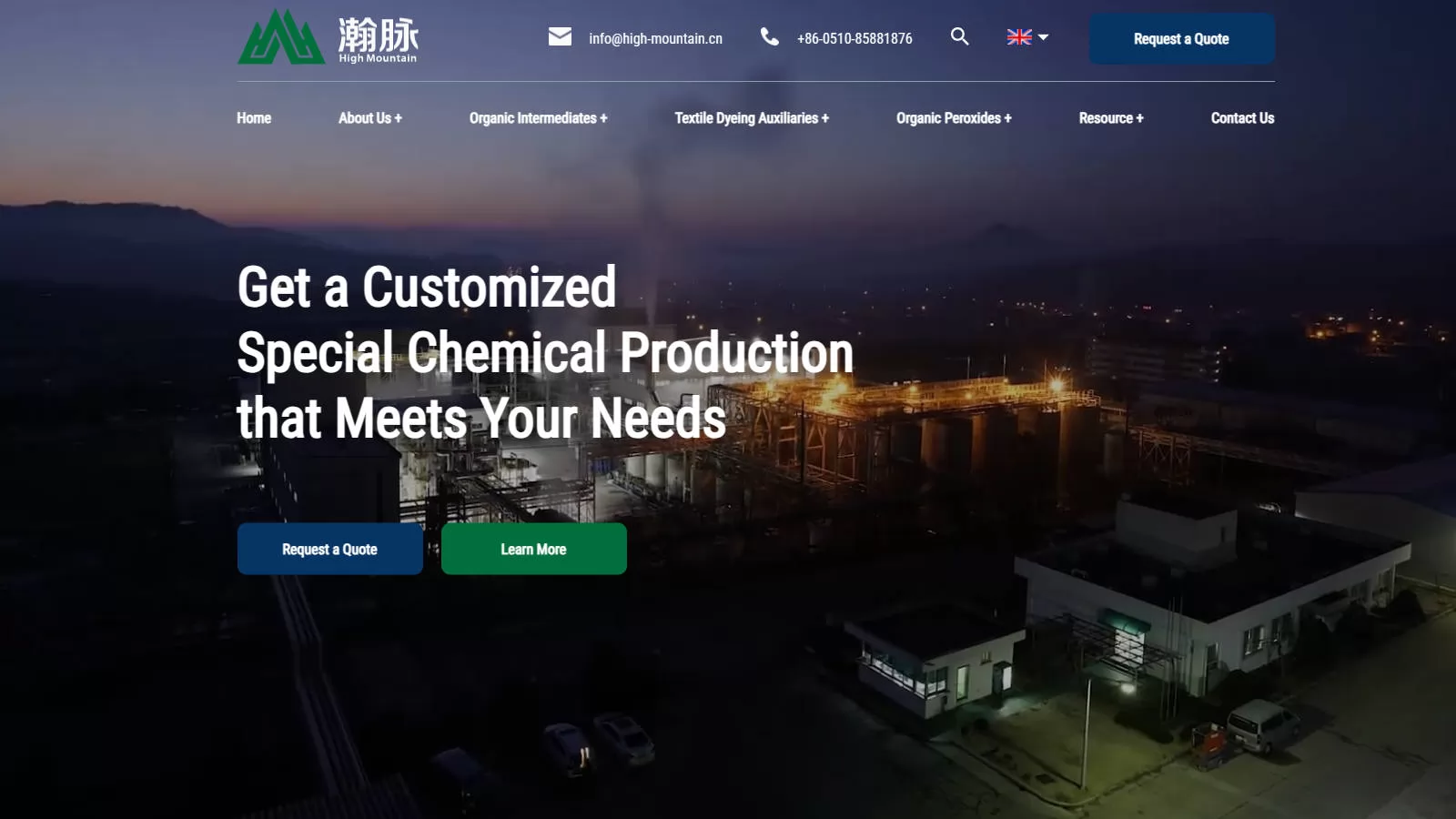
Established: 2014
Location: Jiangsu Province, China.
Products & Services: Wuxi Hanmai Technology Development Co., Ltd. is a company specializing in the technology development, technology consulting, and technology transfer of chemical products; corporate management consulting; chemical products and raw materials (excluding dangerous goods), food additives, building materials, daily necessities, Sales of general machinery and accessories, electrical machinery and equipment, electronic products, metal materials, computer software and hardware; operation of hazardous chemicals (operated according to the scope and method listed in the license); self-operation and agency import and export of various commodities and technologies Business etc. Among them, benzoyl peroxide is one of its main chemical products and is widely used in medicine, cosmetics, food and other fields.
Company Profile: Wuxi Hanmai Technology Development Co., Ltd. is a rapidly growing chemical enterprise with a professional R&D team and advanced production equipment. The company adheres to the business philosophy of "integrity management, customer first" and is committed to providing customers with high-quality products and services. The company's products comply with relevant domestic and foreign quality standards and have obtained ISO9001 quality management system certification and other certificates.
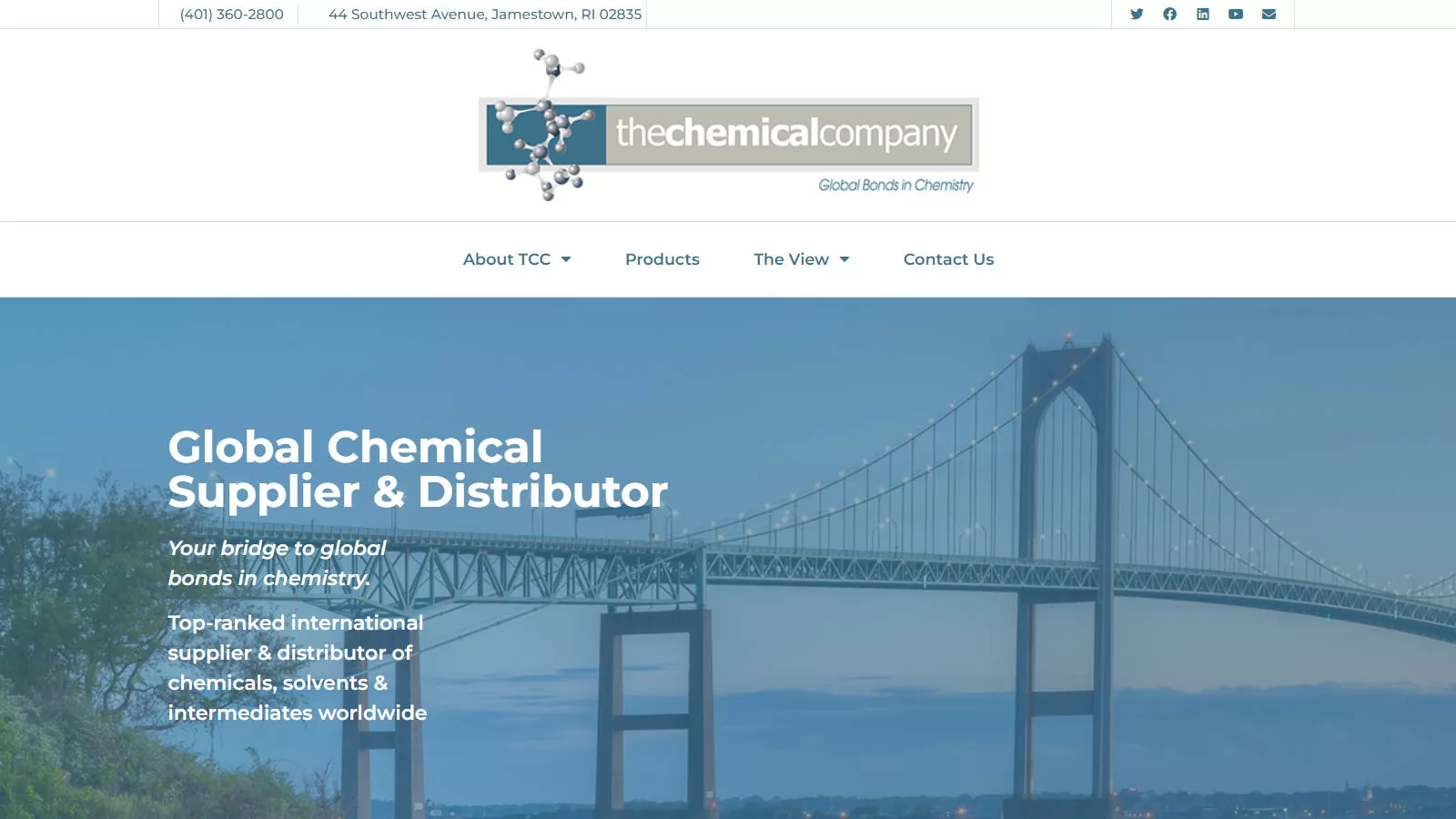
Established: 1998
Location: Shanghai, China
Products & Services: A major Chinese producer of ECH, with a significant production capacity and strong domestic market presence.
Company Profile: Founded in 1988, The Chemical Company (TCC) is a premier, family-owned chemical distribution company headquartered in Jamestown, Rhode Island, USA. As a trusted name among epichlorohydrin suppliers, TCC specializes in delivering high-quality chemical intermediates, including those used in epoxy resin production, to industries worldwide. With over three decades of expertise, TCC serves as a reliable partner for businesses seeking epichlorohydrin manufacturers and distributors for applications in manufacturing, agriculture, water treatment, and more.
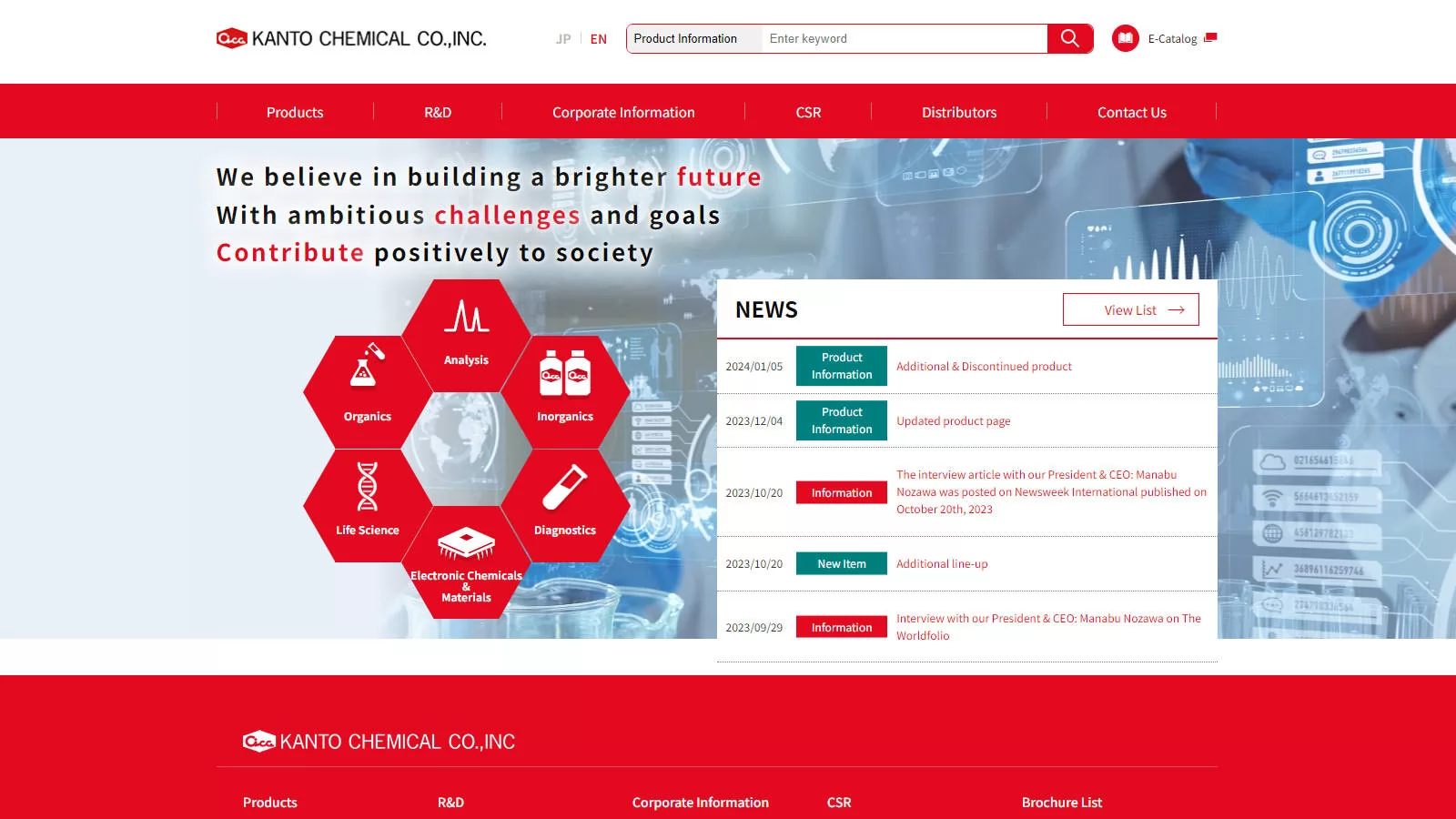
Established: 1943
Location: Tokyo, Japan
Products & Services: A renowned Japanese ECH producer known for its high-quality products and technical expertise.
Company Profile: KANTO CHEMICAL CO., INC., a global leader among epichlorohydrin manufacturers and chemical suppliers, has been driving innovation in high-purity chemical solutions since its founding in 1944. Headquartered in Tokyo, Japan, KANTO is renowned for its expertise in fine chemicals, reagents, and electronic materials, serving industries such as semiconductors, textiles, pharmaceuticals, and epoxy resin production. With a robust portfolio of over 50,000 products, KANTO delivers high-quality chemicals, including those critical to epichlorohydrin-related applications like epoxy resin manufacturing, adhesives, and coatings.
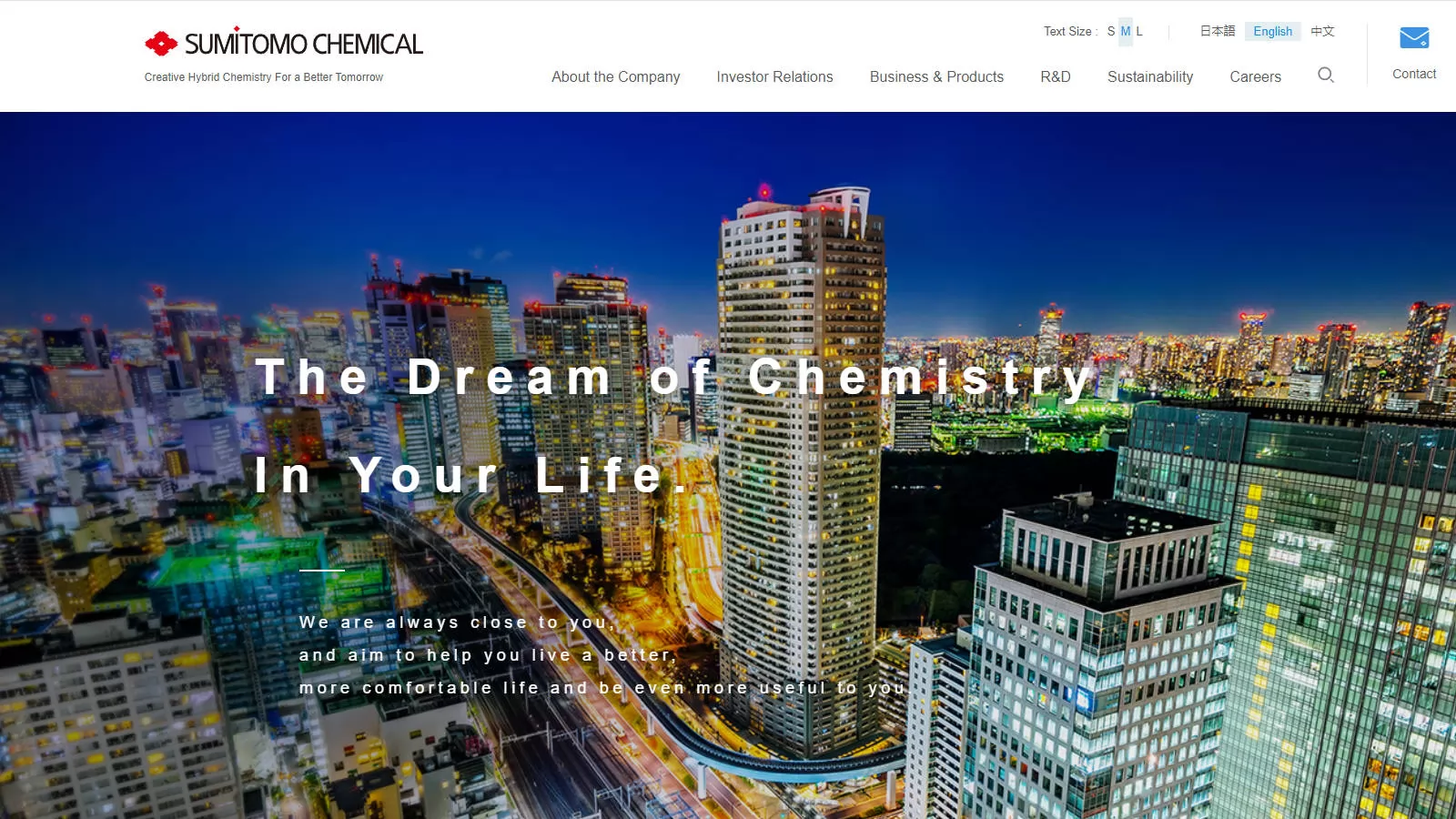
Established: 1913
Location: Tokyo, Japan
Products & Services: A leading global producer of ECH, offering a wide range of grades for various applications.
Company Profile: Sumitomo Chemical operates in five sectors: Petrochemicals & Plastics, Energy & Functional Materials, IT-related Chemicals, Health & Crop Sciences, and Pharmaceuticals. Its epichlorohydrin manufacturing expertise supports applications in paints, coatings, adhesives, and textiles, driven by a projected market growth of 5–6.1% CAGR through 2032. Recent strategic moves, including a 2022 partnership for epichlorohydrin production in Malaysia, underscore its focus on expanding capacity while prioritizing sustainability. Despite a 2024 restructuring to downsize commodity chemicals, Sumitomo remains a top epichlorohydrin manufacturer, delivering innovative solutions worldwide.
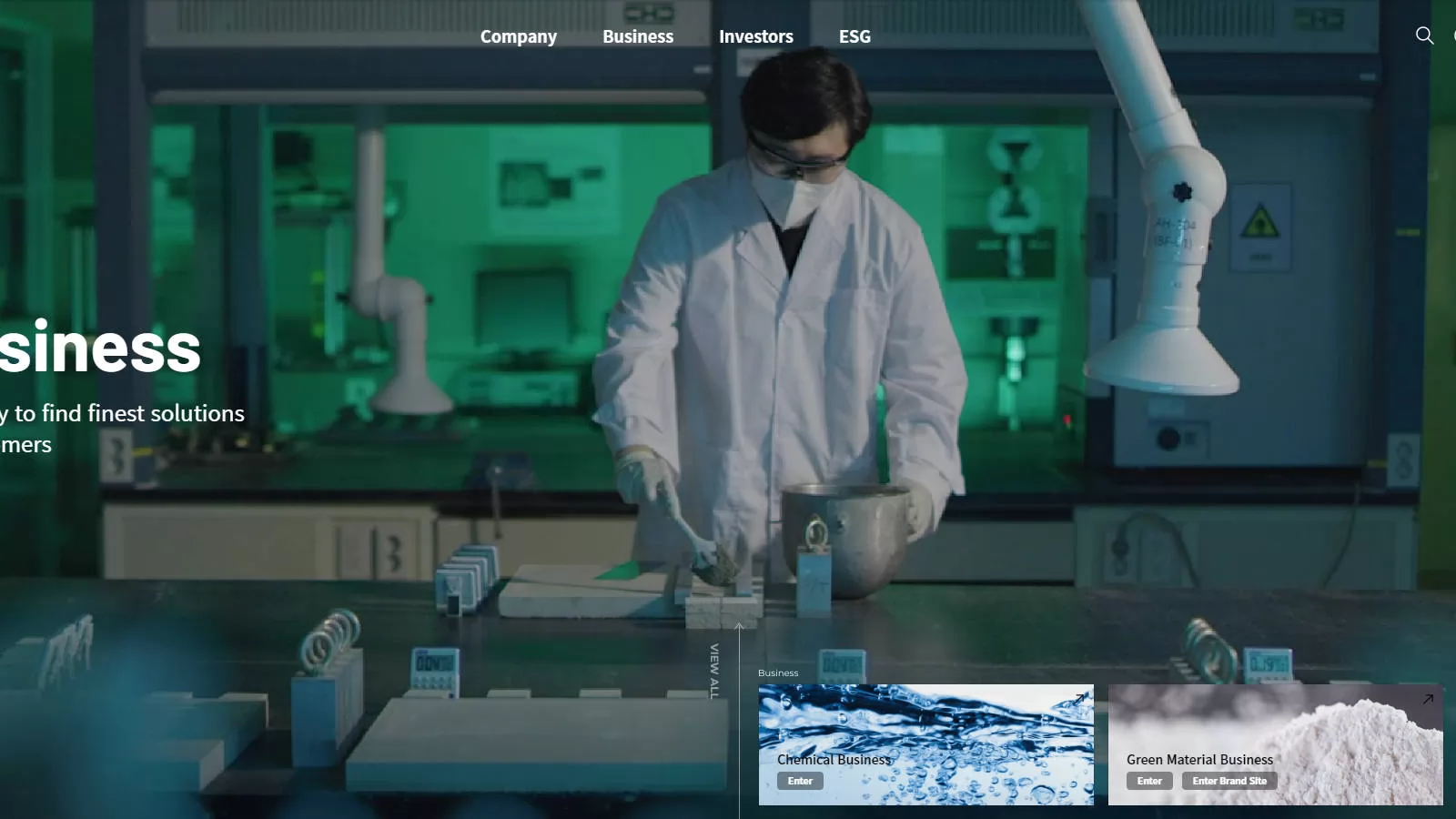
Established: 1974
Location: Seoul, South Korea
Products & Services: A major South Korean chemical producer with a growing ECH production capacity and strong presence in Asia.
Company Profile: As a premier epichlorohydrin manufacturer, Lotte Fine Chemical produces high-quality epichlorohydrin (ECH), a critical raw material for epoxy resins used in paints, electronics, and construction. The company’s extensive portfolio also includes chlorine derivatives, ammonia-based chemicals, cellulose ethers, and electronic materials, serving industries such as pharmaceuticals, textiles, construction, and electronics. Operating across East Asia, Europe, the Middle East, and South America, Lotte Fine Chemical is recognized for its cutting-edge technology, eco-friendly practices, and reliable supply chain.
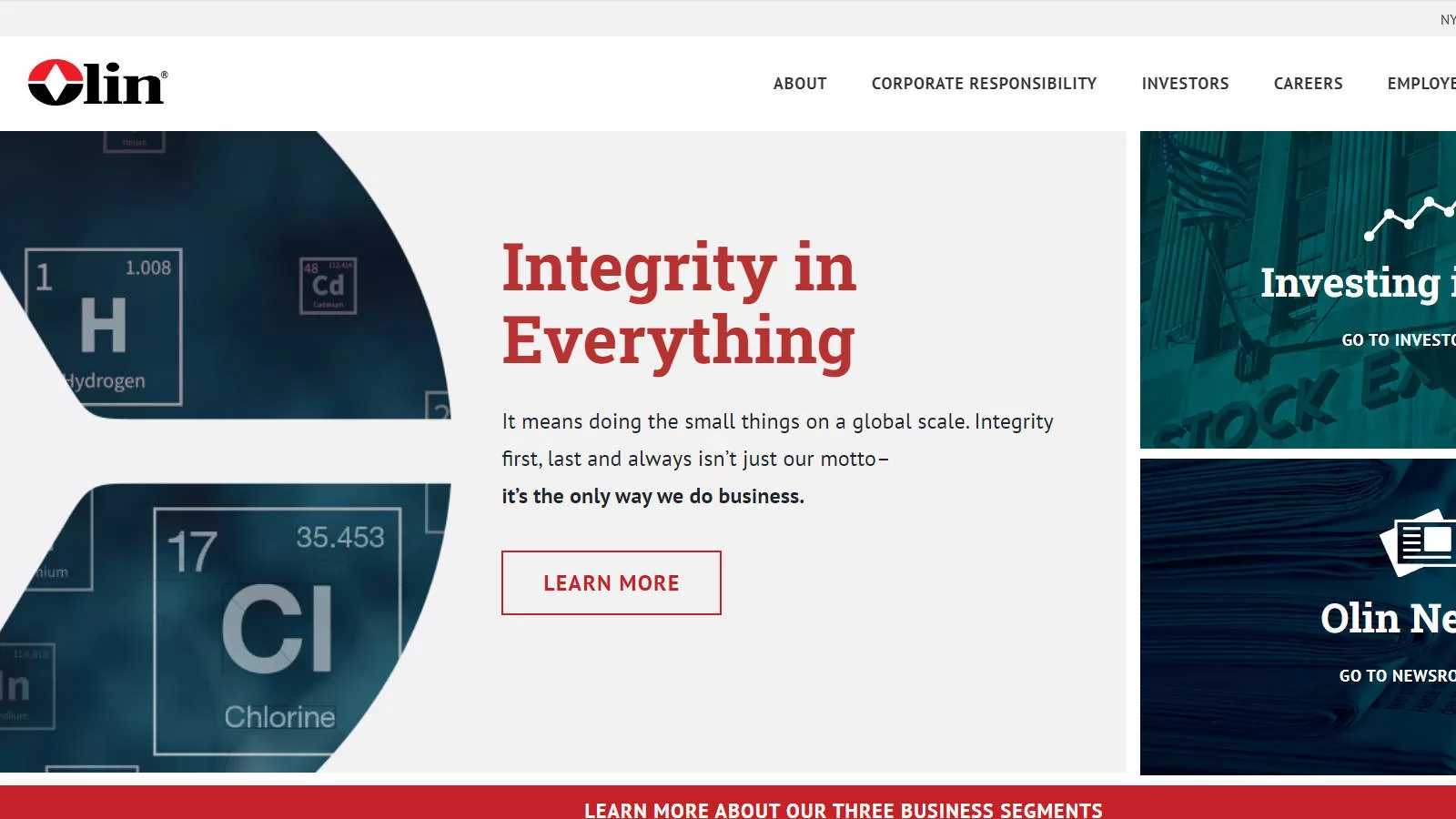
Established: 1892
Location: Clayton, Missouri, USA
Products & Services: A leading US chemical producer with a significant ECH production capacity and strong presence in North America.
Company Profile: Olin Corporation, a premier epichlorohydrin manufacturer, is a vertically integrated global leader in chemical production and ammunition manufacturing. Founded in 1892 in East Alton, Illinois, Olin has grown from a small explosives supplier to a powerhouse with operations in over 15 countries, serving customers in nearly 100 countries. Headquartered in Clayton, Missouri, Olin employs approximately 7,700 professionals and operates three core segments: Chlor Alkali Products and Vinyls, Epoxy, and Winchester Ammunition. As a top epichlorohydrin supplier, Olin delivers high-quality precursors for epoxy resins, supporting industries like construction, automotive, aerospace, and renewable energy.
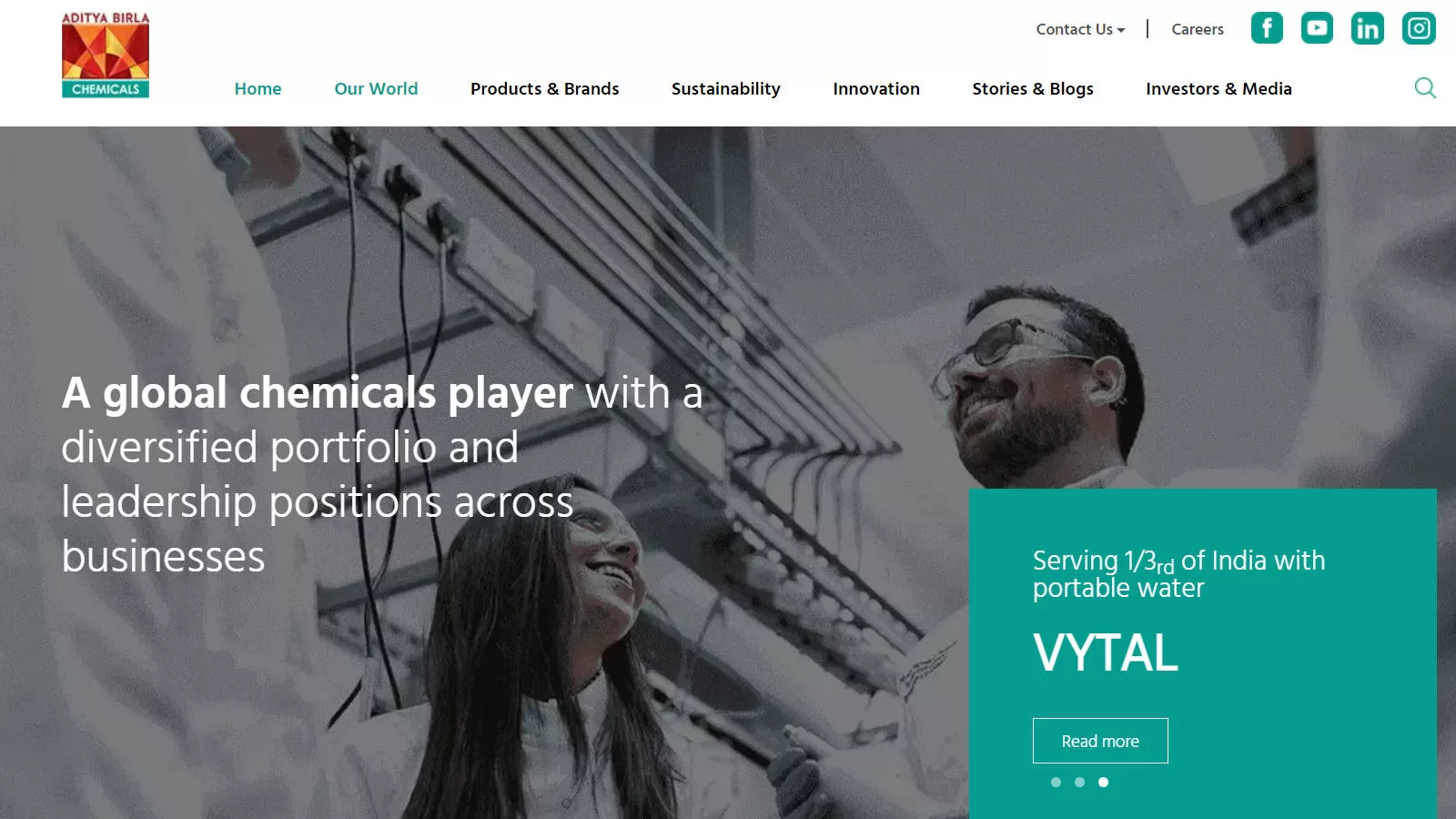
Established: 1947
Location: Mumbai, India
Products & Services: A leading Indian chemical producer with a growing ECH production capacity and strong presence in the Indian market.
Company Profile: As one of the top epichlorohydrin manufacturers globally, Aditya Birla Chemicals, through its subsidiaries like Aditya Birla Chemicals (Thailand) Pvt. Ltd. and Grasim Industries Limited, produces high-quality epichlorohydrin for epoxy resins, synthetic glycerin, and water treatment chemicals. In 2024, the company expanded its U.S. presence with a $50 million manufacturing and R&D facility in Beaumont, Texas, strengthening its position in the global epichlorohydrin manufacturing market. Certified with ISO, NSF, Reach, and CAA standards, Aditya Birla Chemicals is a trusted partner for businesses seeking reliable and sustainable chemical solutions.


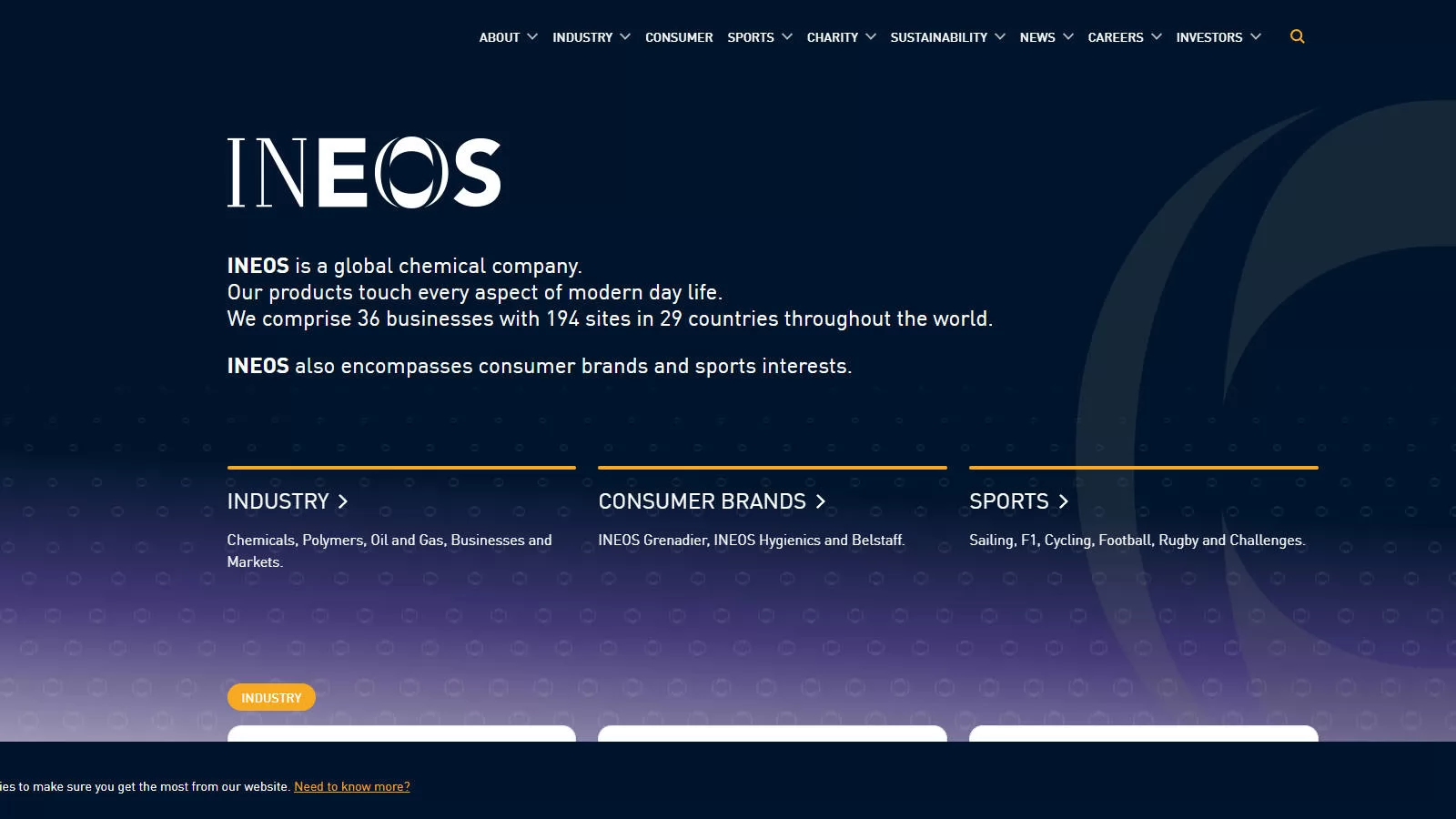
Epichlorohydrin is produced via two main methods, each with distinct advantages:
The epichlorohydrin industry is evolving rapidly. Key trends include:
This list provides a starting point for your ECH manufacturer search. Remember, conducting thorough research and direct communication with each company is crucial to making an informed decision. By prioritizing your specific needs and evaluating each supplier comprehensively, you can confidently select the partner best suited to deliver high-quality ECH and build a successful long-term collaboration.If would like more ,please click here.


